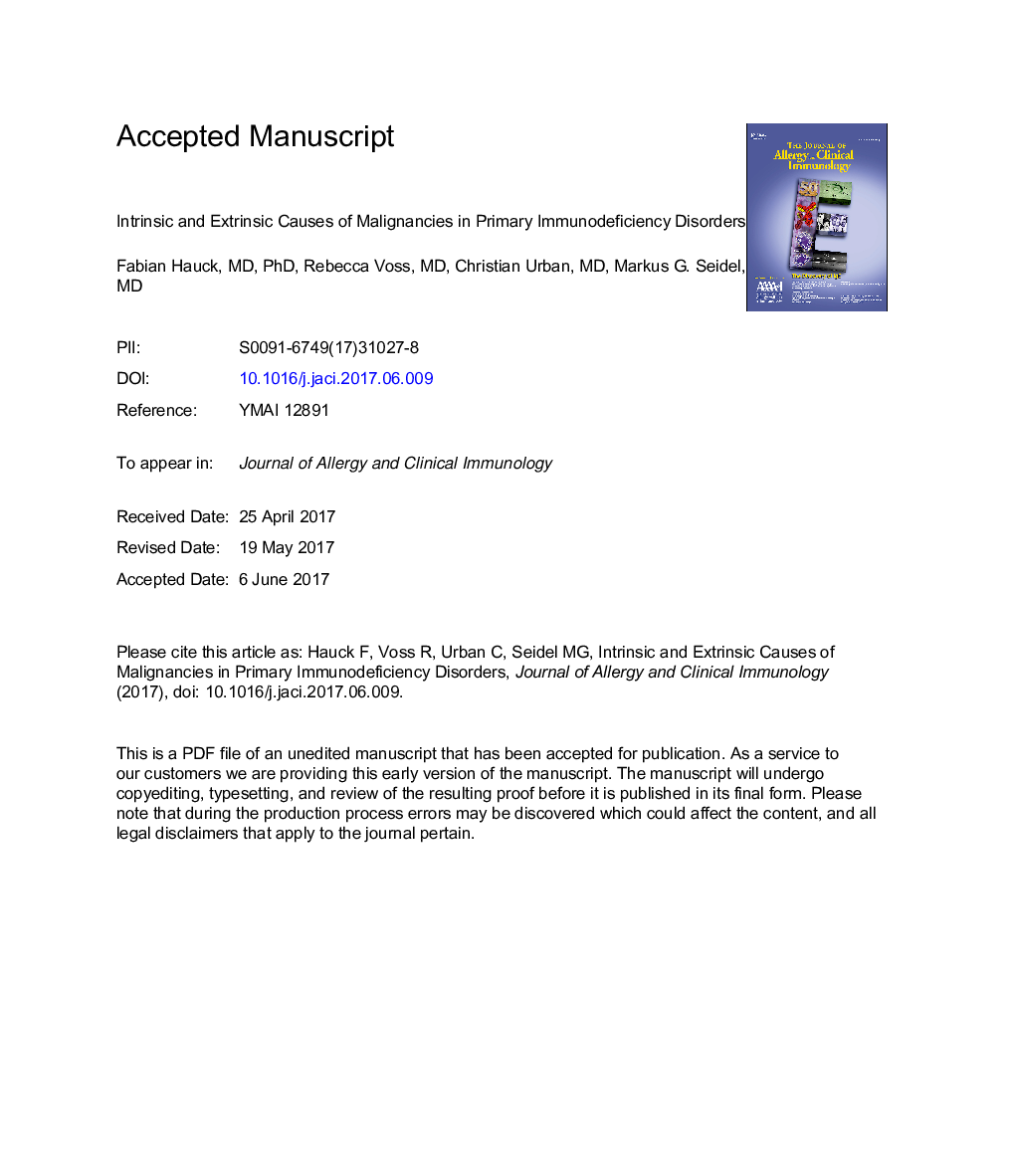| Article ID | Journal | Published Year | Pages | File Type |
|---|---|---|---|---|
| 8713766 | Journal of Allergy and Clinical Immunology | 2018 | 39 Pages |
Abstract
Malignancies occur with a higher incidence rate and manifest earlier in life in patients with primary immunodeficiency disorders (PIDs) than in the general population. However, no universal mechanism of malignancy predisposition in patients with PIDs has been determined. Despite strong support for the physiologic role of tumor immunosurveillance and the increasing success of strategies in immunologic tumor therapy, which include checkpoint inhibition, mAbs, and engineered T-cell antigen receptors, the incidence and pattern of malignancies in patients with PIDs do not reflect an increased tumor immune escape per se. In contrast, malignancies appear to be restricted to either (1) tissue types bearing the same molecular defect that underlies the PID, such as syndromes of DNA repair deficiency or immune cell-specific maturation or functional defects that suggest a cell-intrinsic oncogenic basis, or (2) other tissues when they are infected by transforming viruses or chronically inflamed, pointing toward extrinsic causes for transformation that are potentially facilitated by but not predominantly caused by a lack of immunosurveillance. Based on recent studies of pre-existing conditions in patients with malignancies and on malignancies in large PID cohorts, we conclude that a large part of tumor predisposition in patients with PIDs is derived from the same molecular defect as the immunodeficiency itself. The presented concept elucidates diverse pathomechanisms and risks of malignancies in patients with PIDs in light of current tumor immune therapies.
Keywords
PD1HSCTNHLCVIDESIDSBDSCTLA4RAGNBSSCNSCIDCHHCMMRDHLHPIDSLAM-associated proteinPrimary immunodeficiency disorderCIDDSBnatural killerCartilage-hair hypoplasiacytotoxic T lymphocyte–associated antigen 4European Society for ImmunodeficienciesmalignancyWASAlpsWiskott-Aldrich syndromeNijmegen breakage syndromeautoimmune lymphoproliferative syndromedouble-strand breakSAPNon-Hodgkin lymphomaHemophagocytic lymphohistiocytosisAcute lymphoblastic leukemiaImmune surveillancesevere congenital neutropeniaALLprogrammed cell death protein 1Hematopoietic stem cell transplantationRecombination-Activating GeneFanconi anemiaprimary immunodeficiencyCommon variable immunodeficiencyCombined immunodeficiencysevere combined immunodeficiency
Related Topics
Life Sciences
Immunology and Microbiology
Immunology
Authors
Fabian MD, PhD, Rebecca MD, Christian MD, Markus G. MD,
